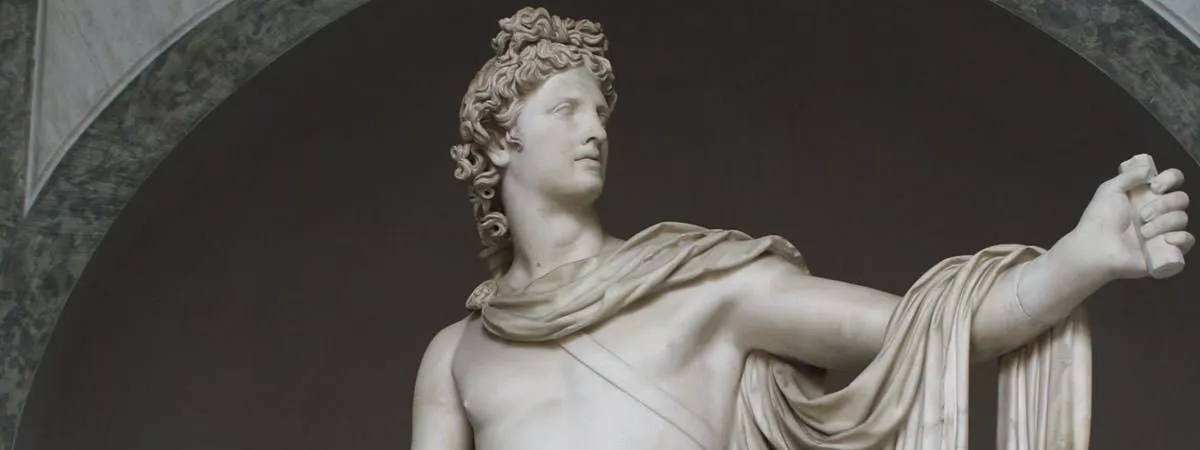Apollo was an influential and complex deity in ancient Greece who served numerous functions including being a god of music, healing, the sun, light, oracles, knowledge, diseases, poetry, dance, archery, herds and flocks, and protection of young. According to Greek mythology, Apollo was the sun of Zeus, king of the gods, and the Titaness, Leto. The cult of Apollo was centered at Delphi, an important religious sanctuary where the oracle was consulted about important decisions throughout the ancient European world. It was believed that Apollo communicated his knowledge of the future and the will of his father Zeus through oracles at the site.
Apart from this, Apollo played numerous other roles in Ancient Greece including being a protector of herds, flocks and crops; a patron of seafarers; and looking over the health of young boys while presiding over their passage to adulthood. Apollo features prominently in Greek and Roman art. He was also depicted in Renaissance art and he continues to feature in the popular culture of the modern world. Among other things, the first manned spacecraft to moon was named Apollo 11. Know more about the Ancient Greek God Apollo through these 10 interesting facts.
#1 THE FIRST TEMPLE DEDICATED TO APOLLO WAS BUILT AT DELPHI
The etymology of the name Apollo is uncertain. According to ancient Greek grammarian Hesychius, the word come from the Doric word apella, which originally meant “wall” and “fence for animals” and later “assembly within the limits of the square”. The origin of the God Apollo is also uncertain and it is speculated that he was not worshiped in Greece before 8th century BCE. It is believed that he came into Greek culture from somewhere north of Greece or from Asia. The ancient epic writer Homer connects him with Lycia and, in his epic Iliad, Apollo is an enemy of the Greeks. There are also many oracles of Apollo in Asia Minor but his Asian origins are yet unproved.
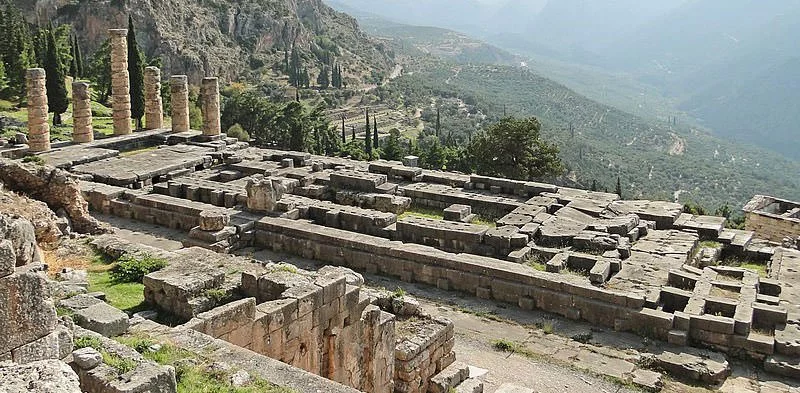
Apollo was introduced to Italy partly through Etruria and partly through the Greek settlements in Magna Graecia. Though he was first worshiped as a god of healing in Roman religion, soon he also became prominent as a god of oracles and prophecy. Apollo also had many temples dedicated to him which capture the evolution of Greek architecture. The first temple dedicated to Apollo was built at Delphi around 7th century BCE by two legendary architects Trophonios and Agamedes. It was rebuilt after a fire in 6th century BCE and was named the “Temple of Alcmeonidae” in tribute to the noble Athenian family that oversaw its construction.
#2 He IS REGARDED AS THE MOST BEAUTIFUL GREEK GOD
Apollo is the son of Zeus, king of the gods, and the Titaness, Leto. He is also the twin brother of Artemis, the Goddess of the Hunt. When Hera, the sister-wife of Zeus discovered that Zeus had impregnated Leto, she cursed her not to find a solid ground or island on earth to give birth to her children. In labor and massive pain, Leto wandered all over Greece to find a place to give birth to her children until she found Delos, a barren and floating island. According to myth, it was Zeus who emerged Delos from the sea so that Leto would find a place to bring forth her offspring. The delivery of Artemis was painless but the birth of Apollo was painful and treacherous because by then Hera had kidnapped Eileithyia, the goddess of childbirth. It was Artemis who assisted her mother with the birth of her younger twin brother Apollo.
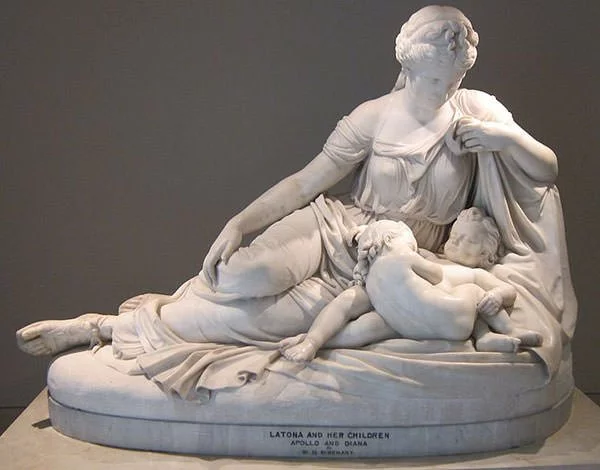
Everything on Delos turned into gold when Apollo was born clutching a golden sword. Due to Leto’s inability to feed the newborn, Themis, the goddess of divine law, fed him an immortality drink called ambrosia. At the first taste of ambrosia, Apollo immediately transformed into a man. Moreover, Apollo came to be regarded as the most beautiful Greek God. Thus, in Greek sculpture, he is portrayed as young, handsome, clean-shaven and an athletic youth with lustrous hair.
#3 APOLLO IS ONE OF THE TWELVE OLYMPIAN GODS
Apollo is one of the 12 Olympian Gods who resided atop Mount Olympus. The Olympians are a race of deities who are a third or fourth generation of immortal beings and they were worshiped as the principal deities of the Greek pantheon. The Olympians managed to become the supreme deities after a 10 year long struggle known as Titanomachy. In this struggle, Apollo’s father Zeus led his siblings to victory over the Titans, who were the ruling deities at the time.

Although there are a number of immortal residents at Mount Olympus, only 12 of them are considered the most important ones. These include the children of Titans Cronus and Rhea; namely Zeus, Hera, Poseidon, Demeter and Hestia; along with the main offspring of Zeus; namely Athena, Apollo, Artemis, Ares, Hephaestus, Hermes, Dionysus and Aphrodite. Apollo is one of the most important and powerful of the Olympian deities. It was believed that even the gods feared him, and it was only his father and his mother who could easily endure his presence.
#4 HE WAS WORSHIPED AS A GOD OF MUSIC AND HEALING
Among other things, Apollo was revered as the God of Music in ancient Greece. He was regarded as the master of many instruments but is most known for playing the lyre. According to myth, immediately after his birth, Apollo demanded a lyre. Moreover, four days after being born, he slayed the dragon Python for troubling the Greeks and also for chasing his mother while she was pregnant. After killing Python, Apollo played a song of victory, or a Paean, for everyone to hear. Apollo’s role as the slayer of the Python led to his association with battle and victory. Due to this, in later times, it became a Roman custom for a paean to be sung by an army on the march; before entering into battle; when a fleet left the harbor; and also after a victory had been won.
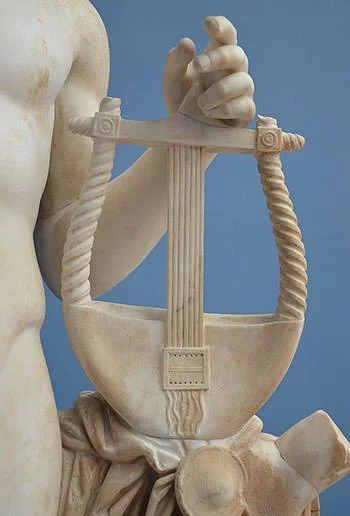
Because of his mastery over music, Apollo is often depicted in the company of the Muses; the inspirational goddesses of the arts, literature, and science; as well as a frequent performer at the weddings of the gods. Moreover, it was believed that his divine music could deliver people from their pain and suffering. This, combined with his devotion to the art of medicine, made Apollo a Greek god of healing too. As a God of healing, Apollo possessed the ability to deliver people from epidemics. However, he could also bring ill-health and deadly plague with his arrows.
#5 APOLLO IS A DEITY OF MANIFOLD FUNCTIONS
Apollo is one of the most widely revered and influential of all the ancient Greek and Roman gods. Apart from being the God of music and healing, he was worshiped as the God of the sun, light, oracles, knowledge, diseases, poetry, dance, archery, herds and flocks, and protection of young. One of the primary roles of Apollo was to protect herds, flocks and crops from diseases, pests and predators. Due to this, he was a patron God of herdsmen and shepherds. As a God of oracles, he played the role of communicating with mortals his knowledge of the future and the will of his father Zeus through prophets and oracles. How and why he became a prophetic god in Greece is not known, but he is so from the earliest records. The most important of his oracular shrines was located in Delphi.
Apollo was also the God who made men aware of their own guilt and purified them of it. One of the best attested of the multiple roles of Apollo in ancient Greece was his ability to protect the young. He was said to have looked over the health and education of children while presiding over their passage into adulthood. Long hair, which was the prerogative of boys, was cut at the coming of age and dedicated to Apollo. Apollo was also the patron of seafarers and foreigners; and protector of fugitives and refugees.
#6 PYTHIAN GAMES Were HELD IN DELPHI TO HONOR APOLLO
In ancient Greece, a festival called the Pythian Games was celebrated every 4 years at Delphi in honor of Apollo. Smaller versions of the Pythian Games were celebrated in many other cities of the Levant and Greece. Established around 6th century BC, the Pythian Games were said to have commenced to commemorate Apollo slaying a mythical serpent named Python to render the safety of human beings. The preparations of the festival used to start before six months and nine citizens of Delphi, known as Theoroi, were sent to all Greek cities to announce the beginning of the games to attract athletes.

In the beginning, only musical contests were held in the Pythian Games. However, the games were later extended to include art, dance and sports competitions. The final day of the games was dedicated to equestrian races which gradually came to include harness racing, synoris and horse racing. No monetary prizes were awarded to winners and instead they received a wreath of bay laurel, known to be sacred to Apollo. Interestingly, Delphi continued to remain an active pagan site and the Pythian Games continued to be celebrated at least until 424 CE.
#7 HE HAD MANY LOVE AFFAIRS AND FATHERED NUMEROUS CHILDREN
According to Greek mythology, Apollo had several love interests which led to him having many children from mortal women, nymphs and as well as goddesses. One of the prominent love interests of Apollo was Daphne, a female nymph associated with freshwater bodies, who escaped his advances by being turned into a laurel tree. Cyrene, a Thessalian princess was one of Apollo’s love interest and bore him two offspring; namely, Aristaeus and Idmon. The Greek god also fell in love with Ourea, the daughter of Poseidon. Together they had a son named Ileus.
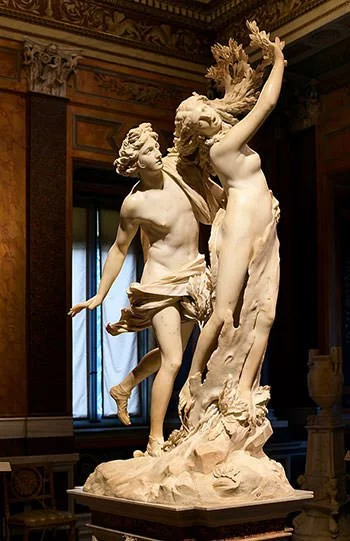
In another affair, Apollo fell deeply in love with Rhoeo, a princess of the island of Naxos. Out of affection for her, he turned her sisters into goddesses. Later, their consummation resulted into a son named Anius. Apollo is also said to have been the lover of all nine Muses. He fathered Corybantes by Muse Thalia; Orpheus by Calliope; Linus of Thrace by Calliope or Urania; and Hymenaios (Hymen) by either Terpsichore or Clio or Calliope. Other lovers of Apollo include Thero, daughter of Phylas; Evadne, a nymph daughter of Poseidon; and Hecuba, the wife of King Priam of Troy. Each of these women bore Apollo sons named Chaeron, Iamos and Troilus, respectively.
#8 HE ALSO HAD SEVERAL AFFAIRS WITH MALE LOVERS
Same sex relationships were prevalent in Greek mythology. Apollo had several male lovers. Besides dalliances with numerous females, Hyacinth, a Spartan prince, was one of Apollo’s favorite lover. According to a myth, the two were once practicing throwing the discus when a discus thrown by Apollo was blown off course by the jealous Zephyrus and struck Hyacinth in the head, killing him instantly. Due to the death of Hyacinth, Apollo was said to be filled with grief and created a flower out of Hyacinth‘s blood and named it after him. The petals of the flower were marked with the mournful exclamation AI, AI (“Alas”).
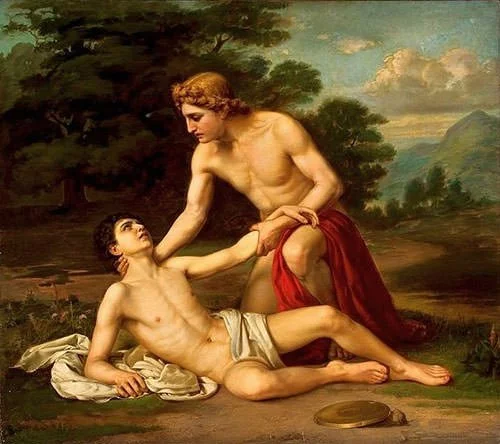
Apollo was also involved in a relationship with Cyparissus, a descendant of Heracles. In another instance, Apollo was “fired with love” for Admetus, the king of Pherae. During his exile, which lasted either for one year or nine years according to different myths, Apollo stayed in as a herdsman and served Admetus. Other male lovers of Apollo include Branchus, a shepherd; Adonis, mortal lover of Aphrodite; Helenus, the son of Priam and a Trojan Prince; and Hymenaios, god of marriage hymns.
#9 APOLLO FEATURES PROMINENTLY IN ANCIENT GREEK AND ROMAN ART
Apollo is a common theme in Greek and Roman art. The evolution of Apollo’s depictions in art also shows us the evolution of the Greek sculpture from the early archaic period to the late archaic period. The first depictions of Apollo are static, formal and have idealized form. On the other hand, in the late archaic period, Greek sculptures attained a full knowledge of human anatomy and created statues in motion which also possessed beauty relative to proportions. The earliest examples of life-sized statues of Apollo may be two distinct figures from the sanctuary in Delos island. The Piraeus Apollo is among the few bronzes from the late archaic period that have survived centuries and is exhibited now at the Archaeological Museum of Piraeus in Athens.
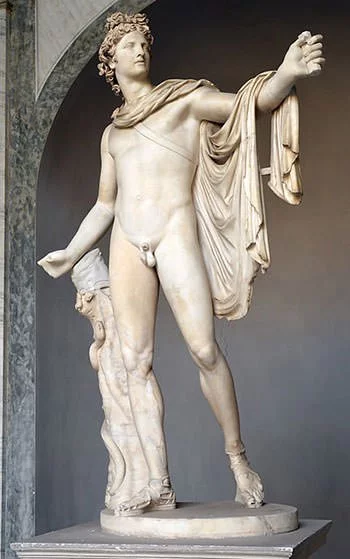
The Apollo Belvedere is a marble sculpture which is now thought to be an original Roman re-creation during 120 to 140 CE. It was rediscovered in central Italy in late 15th century and was placed on semi-public display in the Belvedere palace in the Vatican in 1511, where it remains. Apollo Belvedere became one of the world’s most celebrated art works from mid-18th century as it was considered the greatest ancient sculpture. However, its popularity declined by the 20th century and now few people know about its existence. During the Renaissance, Apollo was depicted by several prominent artists including Michelangelo, Bandinelli, Durer and Goltzius.
#10 THE SPACECRAFT THE LANDED THE FIRST HUMANS ON THE MOON WAS NAMED AFTER HIM
Apollo has been used in popular culture in the modern world in many instances. He featured in post classical literature by major English Romantic poet Percy Bysshe Shelley in his composition “Hymn of Apollo”, published in 1820. In 1927, Igor Stravinsky, a prominent Russian composer, took inspiration from the mythology of Apollo to create Apollon musagète, a neoclassical ballet. The renowned Swiss psychoanalyst Carl Jung sought to find a word that could describe the innate patterns of behavior that govern our lives. He thus introduced the term “Archetypes” into modern psychology. Jung named the archetype that personifies the aspect of the personality that wants clear definitions and values order as the Apollo archetype. The Apollo archetype favors thinking over feeling; distance over closeness; and objective assessment over subjective intuition.
The most famous reference to Apollo in the modern world is however the Apollo Spacecraft Program carried out by the American agency National Aeronautics and Space Administration (NASA). NASA manager Abe Silverstein named the project after the Greek God Apollo as he felt “Apollo riding his chariot across the Sun was appropriate to the grand scale of the proposed program.” On July 20, 1969, at 20:17 UTC, Apollo 11, the spaceflight that was developed during the program, successfully landed the first humans on the moon

